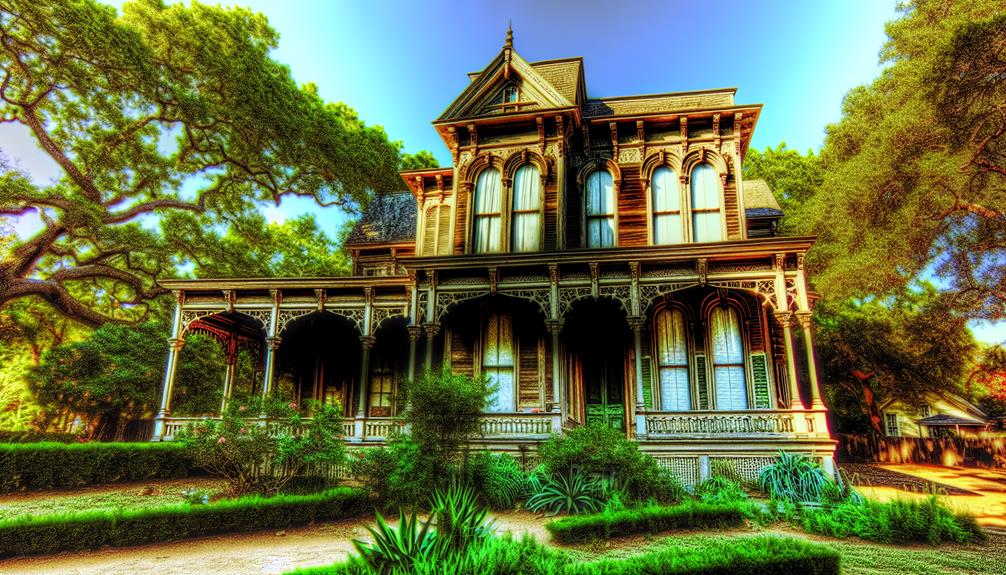When you own a historic home or an older property, securing the right insurance can be a complex and often challenging task. You might find that standard policies just won't cut it, as these unique structures come with specific risks and needs that require specialized coverage. From outdated systems to compliance issues, factors affecting your insurance costs can be numerous and significant. Understanding these intricacies is essential for protecting your investment, but where do you start? Exploring tailored solutions could reveal options you didn't even know existed.
Key Takeaways
- Historic homes often require specialized insurance policies, such as HO-8, to address their unique risks and higher replacement costs.
- Properties over 40 years old typically face higher premiums due to outdated systems and unique building materials.
- Replacement cost coverage is essential to ensure compliance with modern building codes and rebuild historic homes to original specifications.
- Engaging with knowledgeable insurance agents can help navigate the complexities of obtaining suitable coverage for older properties.
- Multiple quotes from insurers specializing in historic homes can help homeowners compare coverage options and costs effectively.
Unique Considerations for Older Homes
When insuring historic homes, you need to contemplate several unique factors that can greatly impact your coverage and costs. Insurance for older homes often comes with higher premiums, averaging about $3,100 annually, due to increased risks associated with outdated plumbing systems and electrical issues. Many insurance companies may limit your homeowners insurance policy options for properties over a certain age, requiring specialized coverage options like HO8, designed specifically for historic homes.
The unique features and materials in these homes complicate the underwriting process, often leading to challenges in finding affordable coverage. High-risk materials, such as aluminum or knob-and-tube wiring, can further increase your costs or even result in denial of coverage. Additionally, securing replacement cost coverage is essential, as it guarantees that you can restore your home to its original condition after a loss, factoring in the high costs of compliance with modern building codes.
Considering these elements helps you navigate the complexities of insuring historic properties, ultimately protecting your investment while understanding the cost of homeowners insurance. By addressing these unique considerations, you can find the right coverage tailored to your historic home's needs.
Insurance Policies for Historic Properties
Insuring your historic property requires a tailored approach, as standard homeowners policies often fall short. You'll likely need an insurance policy specifically designed for historic properties, such as the HO-8 policy. This policy provides coverage for older homes where rebuilding costs exceed the market value, offering actual cash value coverage that accounts for depreciation.
When considering coverage for historic homes, look for specialized options like ordinance or law coverage. This will help cover the costs of upgrading to current building codes during repairs, ensuring your home remains compliant and safe. High-value home insurance policies from providers like Chubb and AIG are also worth exploring, as they cater specifically to historic properties and offer extensive coverage for unique architectural features and specialty materials.
Additionally, organizations like National Trust Insurance Services (NTIS) can assist in finding suitable coverage for homes over 100 years old or with unique features. Your policy should include specific endorsements for antique fixtures and specialty materials, ensuring your restorations maintain the original aesthetic and structural integrity after a loss. With the right insurance in place, you can protect your historic property effectively.
Factors Affecting Insurance Costs
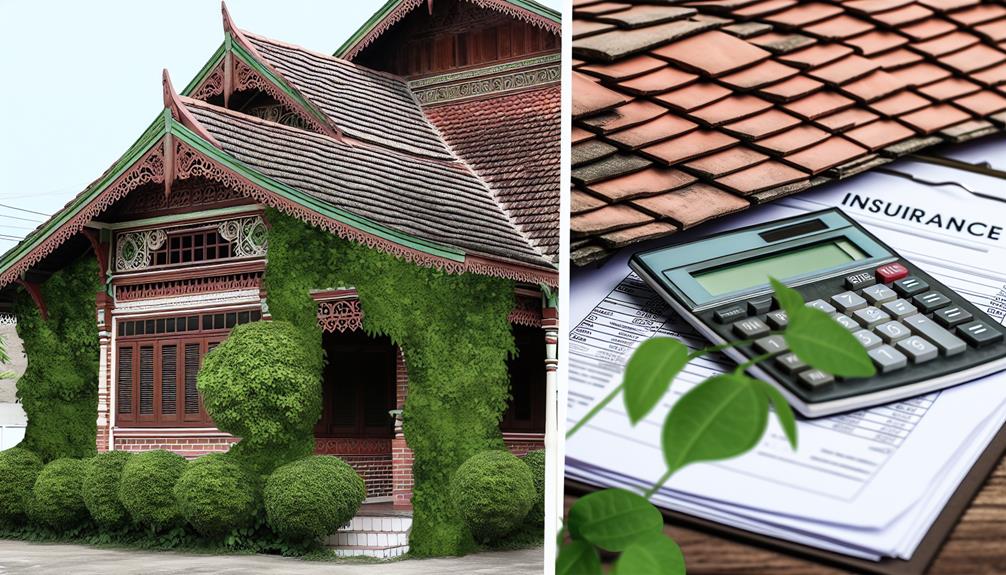
Understanding the unique aspects of your historic home can help you anticipate the factors that influence insurance costs. Older homes can be more expensive to insure due to various risks associated with their age. Here are some key factors that can affect your insurance premiums:
| Factor | Impact on Insurance Costs |
|---|---|
| Age of Home | Homes over 40 years often face higher premiums due to outdated systems and potential structural issues. |
| Building Materials | Less durable materials like wood shakes or asbestos shingles increase replacement cost value. |
| Outdated Systems | Electrical and plumbing systems, like aluminum wiring, are considered high-risk, raising insurance costs. |
| Home Location | Properties in areas prone to natural disasters face higher insurance costs compared to stable regions. |
Your historic property's unique architectural features can also raise repair and maintenance costs, adding to overall insurance premiums. It is crucial to evaluate these factors to get an accurate understanding of your potential risks and what you might expect to pay for insurance coverage. By addressing these issues, you can take steps to mitigate costs and protect your investment.
Special Coverage Options Available
For historic homeowners, having the right type of coverage is crucial to protect against the unique risks associated with older properties. One key option is replacement cost coverage, which guarantees that your historic home can be rebuilt to its original specifications, accommodating the higher costs of specialized materials and craftsmanship. In addition, sewer backup coverage is essential for protecting against financial loss due to sewage or drain backups—a significant risk in homes with outdated plumbing systems.
Ordinance or law coverage is another important feature, as it helps cover the expenses needed to bring your home up to current building codes during repairs or renovations. If your historic home is in a flood-prone area, consider flood insurance, since standard homeowners policies typically exclude flood-related damages.
For older properties, specialized policies like the HO-8 policy provide actual cash value coverage, guaranteeing financial protection without the high costs associated with full replacement coverage. By understanding these special coverage options, you can better secure your investment in your historic home while addressing the unique challenges posed by older properties.
Challenges in Securing Coverage
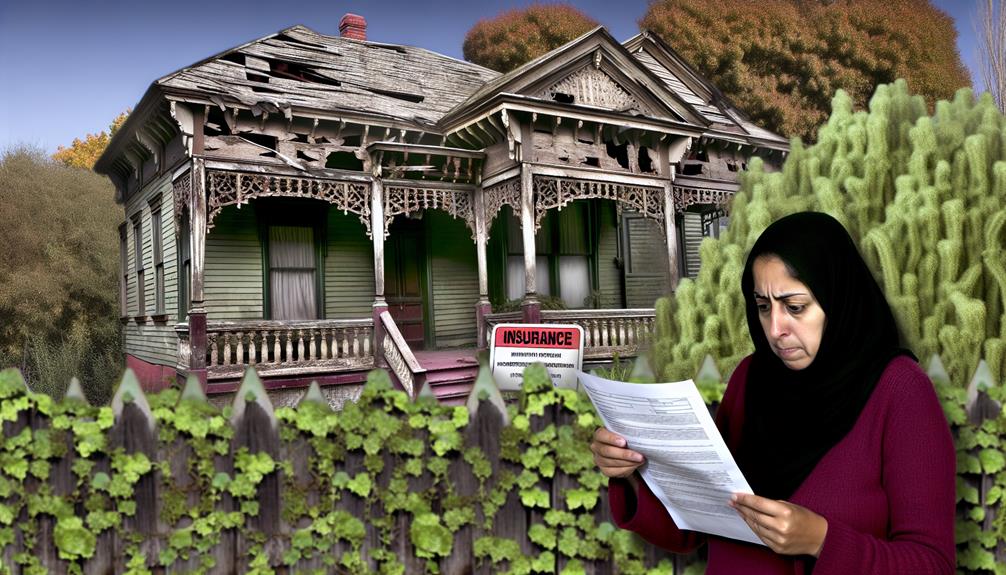
Securing coverage for a historic home can feel intimidating, especially when insurance companies categorize properties over 40 years old as high-risk. Many standard homeowners insurance policies won't cover older homes, leaving you to navigate specialized policies like the HO-8 policy, which are tailored for such unique properties. The challenges don't stop there; insurance companies for older homes often require extensive inspections before issuing coverage. This can delay the process and add to your stress.
Another significant hurdle is the higher replacement costs associated with older homes. If your replacement cost exceeds the value of typical homes, it complicates finding affordable coverage that meets your needs. Additionally, many insurers impose higher deductibles on older properties, reflecting the heightened risk and potential repair costs.
Importance of Specialized Policies
When it comes to insuring historic homes, specialized policies play a crucial role in providing the right coverage. For older homes like yours, the HO-8 homeowners policy is often the go-to option, as it addresses the unique risks associated with historic properties. These specialized policies typically offer more affordable rates while ensuring adequate protection for the distinctive challenges you face.
One key benefit of specialized policies is their focus on higher replacement costs due to outdated materials and unique architectural features. Traditional insurance may overlook these factors, leaving you underinsured. With the HO-8, you can rest easy knowing that your insurance coverage is tailored to the specific needs of your historic home.
Additionally, these policies often include valuable coverage options, such as ordinance or law coverage, which protects you from costs related to complying with current building codes during repairs. Engaging with knowledgeable insurance agents who specialize in older homes can help you navigate the complexities of these specialized policies, ensuring you find the best coverage options for your historic property. Ultimately, having the right specialized policy is critical for safeguarding your investment and preserving its unique charm.
Obtaining Insurance for Older Homes
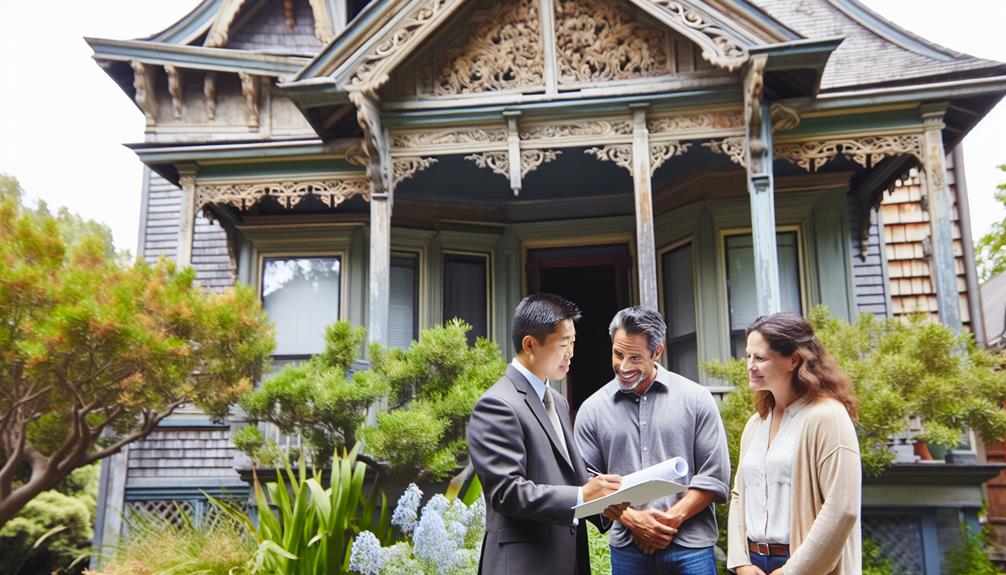
Obtaining insurance for older homes can be a straightforward process if you know what to look for. When insuring older homes, it's crucial to evaluate specialized policies like the HO8 policy, which caters to historic properties where rebuilding costs exceed market value and offers actual cash value coverage. Here are some key points to keep in mind:
- Explore coverage options: Different insurance providers offer various policies tailored to properties over 40 years old.
- Engage independent agents: These professionals can provide localized support and access to specialty insurers familiar with the unique needs of historic properties.
- Prepare for inspections: Extensive inspections may be required, particularly for homes with outdated electrical or plumbing systems.
- Understand policy specifics: Each insurer may have different provisions and limitations, so be sure to read the fine print.
Cost of Insuring Historic Properties
Insuring historic properties often comes with a higher price tag compared to newer homes. For instance, the average annual insurance cost for a 100-year-old home is around $1,956, which is notably more than the $850 less you'd pay for a newer property. Older homes, particularly those over 40 years, usually see increased insurance premiums due to outdated electrical, plumbing, and roofing systems that pose greater risks.
When it comes to coverage, insurers often recommend specialized home insurance policies like the HO-8 policy. This policy provides actual cash value coverage, especially important for historic properties where rebuilding costs can far exceed market value. The use of rare or handmade construction materials in these homes can also inflate replacement costs, further impacting your insurance premiums.
Additionally, factors such as the property's location and overall condition play a vital role in determining your insurance costs. As your home ages, rates typically escalate after it reaches 10 years. So, if you own a historic property, be prepared for these unique challenges when budgeting for your insurance.
Resources for Homeowners
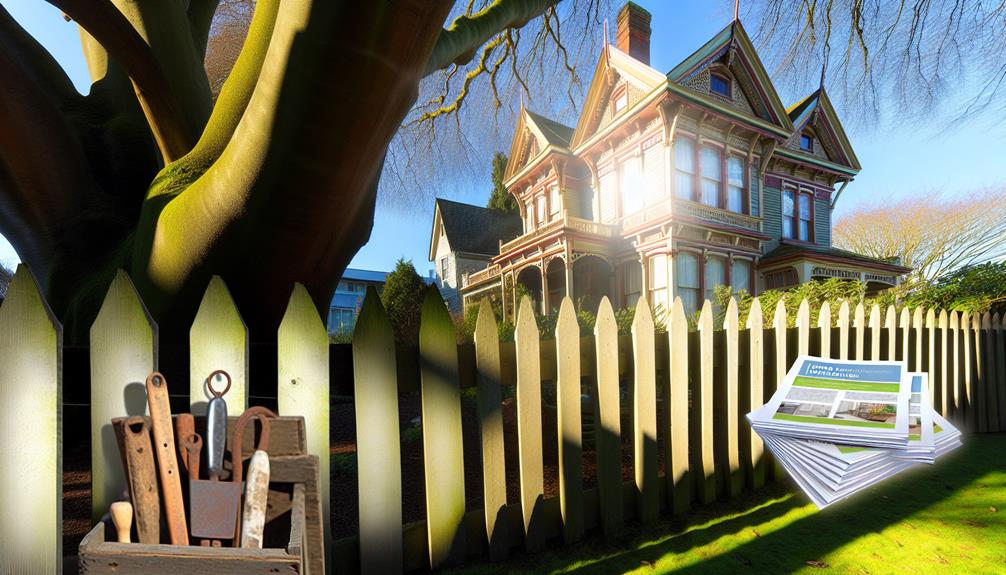
As a homeowner of a historic property, you have access to numerous resources designed to help you navigate the unique challenges of insuring your home. Finding the right insurance coverage for historic properties can be intimidating, but several tools can ease the process.
- National Trust Insurance Services (NTIS): They specialize in providing tailored coverage for older homes, particularly those over 100 years old.
- Policygenius: This platform allows you to compare various homeowners insurance policies, helping you find appropriate coverage options specific to your needs.
- Insurance Agents: Engaging with agents who understand the unique risks associated with historic homes can provide valuable insights and guidance.
- Insurance Inspections: These may be required for older properties to assess their condition and the risks involved, ensuring you receive adequate coverage.
Frequently Asked Questions
Why Is It Hard to Insure an Old House?
Imagine trying to insure a horse-drawn carriage in a world of cars. Insuring an old house can feel just as tricky. You face challenges like outdated systems, higher repair costs, and unique features that raise premiums. Insurers often consider homes over 40 years old as high-risk, limiting your coverage options. With materials like wood shakes, you might struggle to find a standard policy that meets your needs, making it tough to secure proper insurance.
Which Homeowners Policy Is Designed to Cover an Older Dwelling?
If you're looking for a homeowners policy designed to cover an older dwelling, you should consider the HO-8 policy. It's specifically tailored for homes that are typically over 40 years old, providing actual cash value coverage that accounts for depreciation. This means you'll get protection that reflects the unique needs of your older home without the higher costs of full replacement coverage. It's a smart option for older properties with specific risks.
Why Would a House Be Uninsurable?
A house might be deemed uninsurable for several reasons. If it has outdated electrical systems or significant structural issues, insurers usually see it as too risky. Properties over 40 years old often don't qualify for standard policies, especially if their replacement costs exceed market value. You'll also find that extensive maintenance problems or a history of claims can lead insurers to label your property as uninsurable, increasing liability concerns for them.
Why Are Older Houses More Expensive to Insure?
Older houses are often more expensive to insure because they come with unique risks. You've got outdated electrical and plumbing systems that can increase the chance of claims. Materials like wood shakes and asbestos shingles aren't as durable, leading to higher rates. Plus, their distinctive architecture can complicate repairs, driving costs up even further. Insurers see these factors and adjust premiums accordingly, making your insurance costs noticeably higher for older homes.
